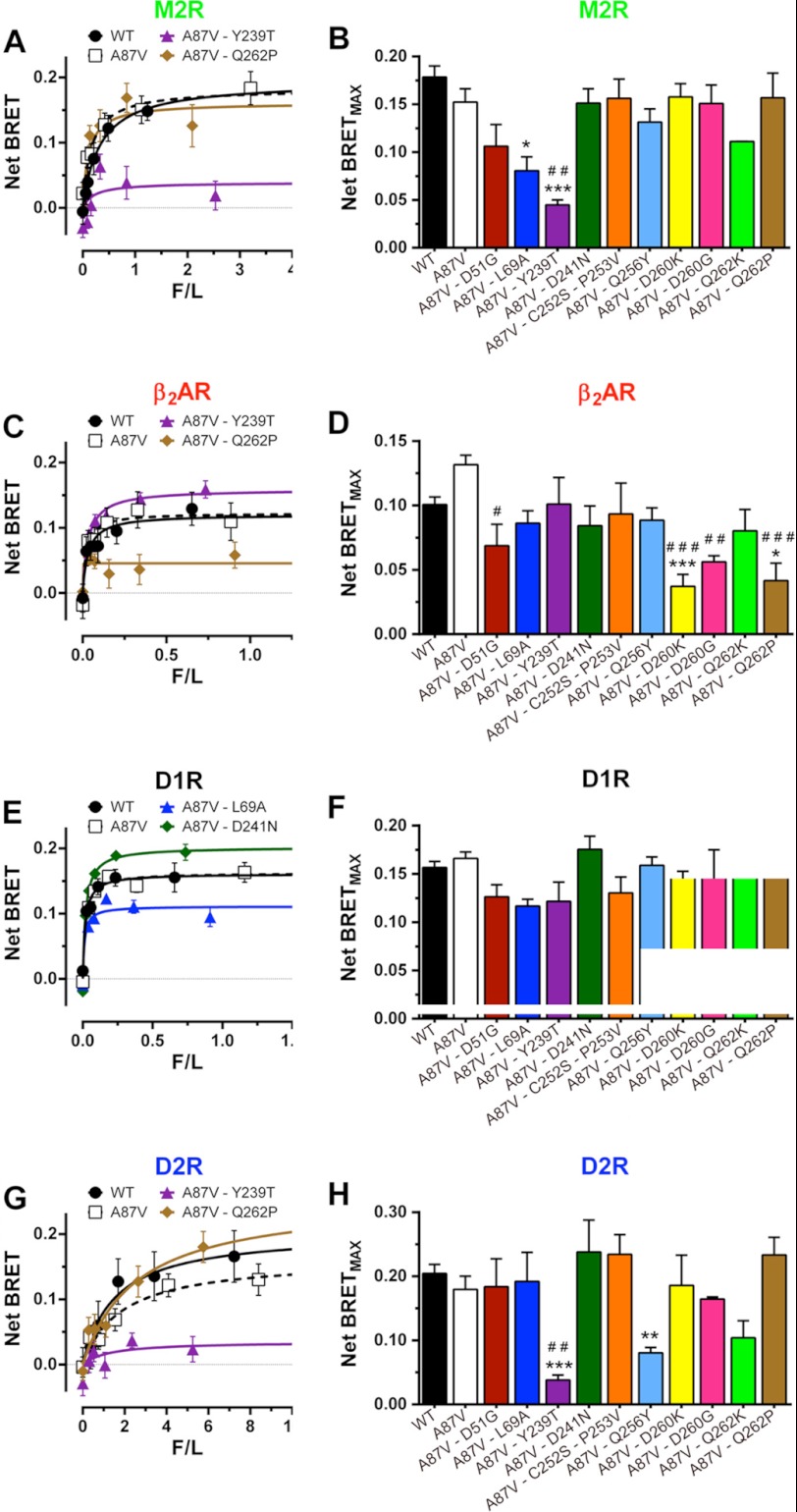FIGURE 2.
Substitutions of receptor discriminator residues in arrestin-3 differentially affect agonist-induced increase in binding to individual GPCRs. BRET between indicated Venus-tagged arrestins and luciferase-tagged human M2R (A and B), β2AR (C and D), D1R (E and F), or D2R (G and H) in COS-7 cells. A, C, E, and G, net BRET (agonist-induced increase in BRET signal) as a function of Venus-arrestin expression level (measured by fluorescence) normalized by receptor level (luciferase luminescence) (F/L) (for details, see supplemental Fig. S2). Shown are means ± S.E. (error bars) of six repeats in a representative experiment (of 3–15 performed) for WT arrestin-3, A87V base mutant, and selected mutants with high or low net BRET. B, D, F, and H, net BRETMAX for the indicated mutant-receptor combinations (raw data shown in supplemental Figs. S3–S6). BRETMAX ± S.E. averaged across experiments is shown. Statistical significance was determined using one-way ANOVA with Dunnett's multiple comparison test. *, p < 0.05; **, p < 0.01; ***, p < 0.001, as compared with WT arrestin-3. #, p < 0.05; ##, p < 0.01; ###, p < 0.001, as compared with A87V base mutant.

